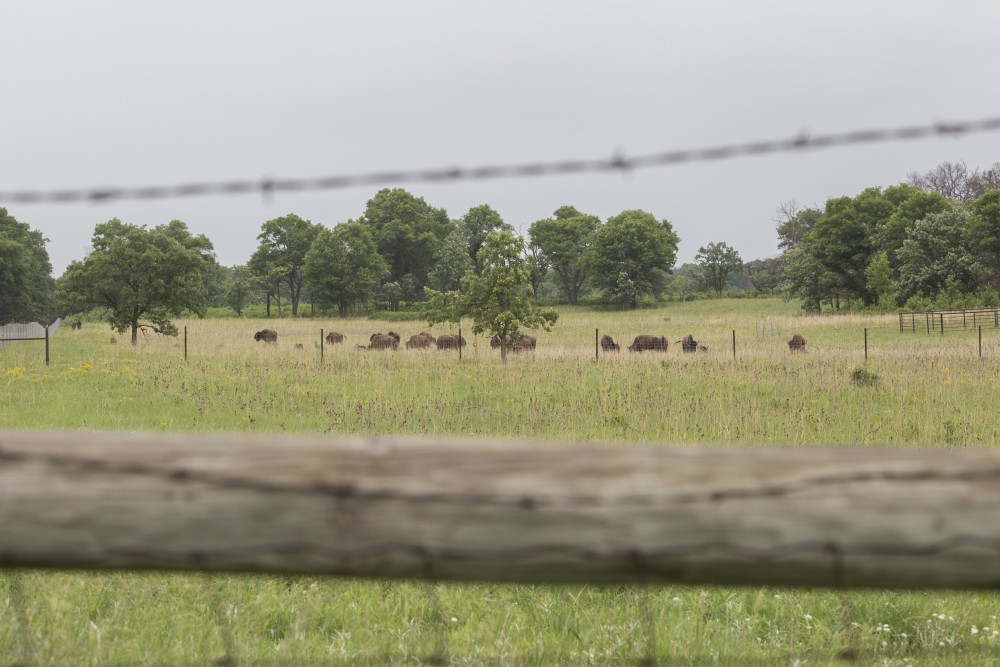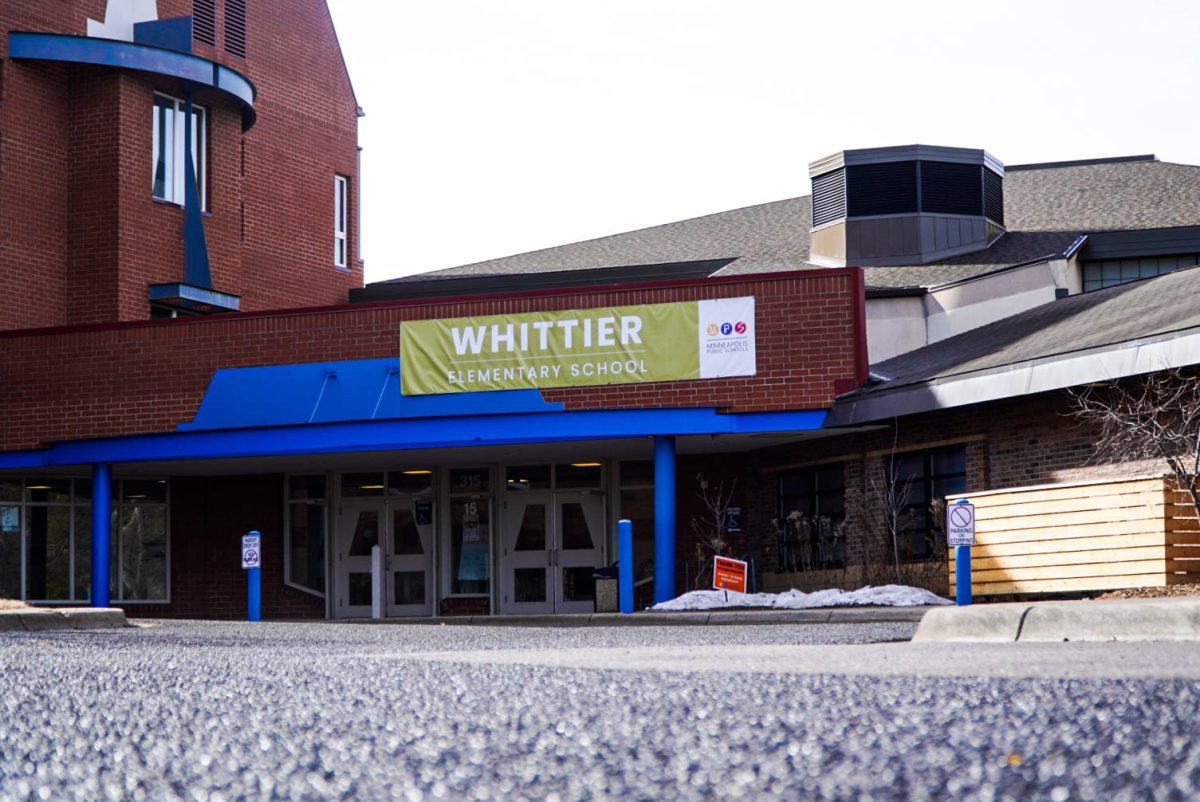A herd of bison was brought to a University of Minnesota nature reserve last week in an effort to restore a threatened ecosystem.
On June 13, the herd of 32 two-year-old bulls was released into the 200-acre Cedar Creek Ecosystem Science Reserve in East Bethel. There are no wild bison in the area, and were introduced to the reserve in an effort to bolster the area’s natural ecosystem.
At the release event, the bison bolted out of their transport to explore their new home. They immediately started grazing on the grass, paying no attention to their human spectators.
Caitlin Potter, the education and outreach coordinator at Cedar Creek, had tears in her eyes as she watched the herd be released.
“To see animals be released like that and behave naturally is amazing,” Potter said.
The bison program is part of a larger project to help restore the oak savanna ecosystem, which has become rare in Minnesota, said Cedar Creek director David Tilman. The reserve has studied the ecosystem since the 1960s, and the program is part of the its mission to preserve ecosystems and provide a deeper understanding of how nature and humanity work together.
“The biggest danger to nature is humanity,” Tilman said. He added that while there are some bison in Minnesota, they’ve been largely absent for the past 187 years.
Implementing the bison into the area has been a long-time goal for Tilman, who has been trying to bring bison back to Minnesota for 20 years in order to help restore the oak savanna in the area, said post-doctoral ecology researcher Chad Zirbel. Bison help maintain the grassland by feeding on grass, which creates room for oak trees to grow.
The project was finally made possible for Tilman when a $388,000 grant was awarded to the researchers by the Environment and Natural Resources Trust Fund in 2017.
In the coming months, researchers will study the effect that the bison grazing has on on the oak savanna in the reserve, which is now dominated by grassland.
With the grass gone, Zirbel said, they hope that oak trees will grow in the reserve.
Researchers planted 660 oak seedlings in the 200-acre enclosure where the bison will graze. They also planted different seedlings in spots closed off to the bison to compare the trees’ survival in each area.
The bison came from the NorthStar Bison ranch in Wisconsin. While the they live at Cedar Creek, the ranch will continue to take care of them at almost no additional cost, Zirbel said.
The herd will return to the ranch in the fall for breeding season.







